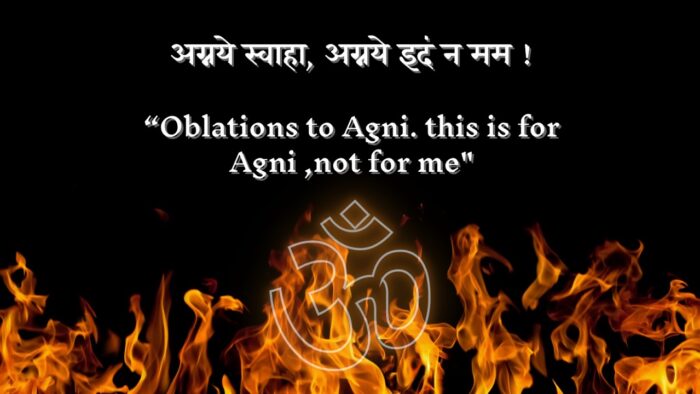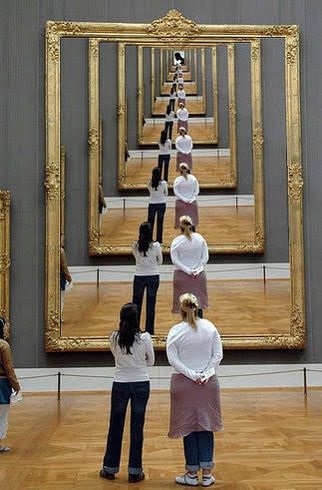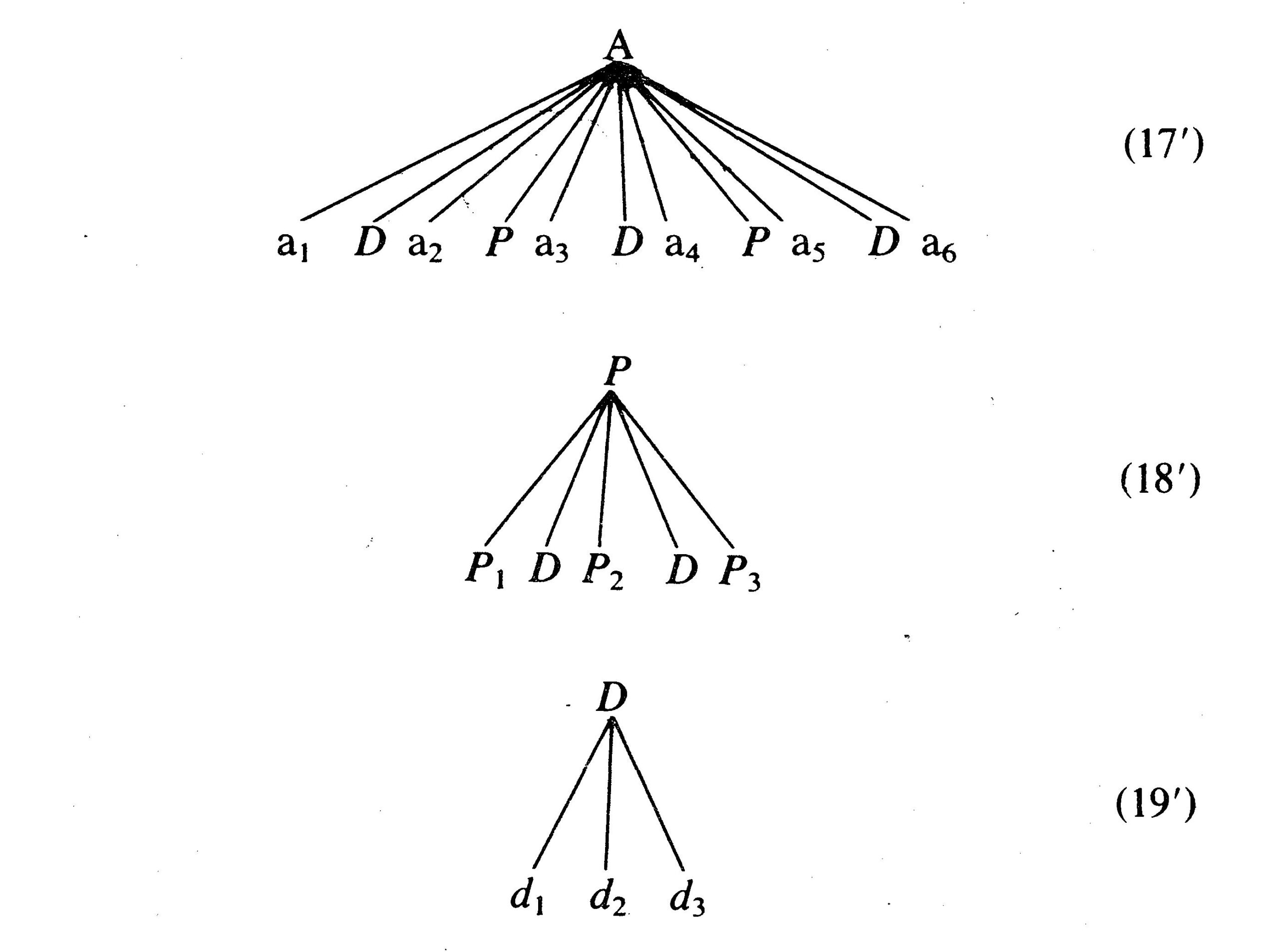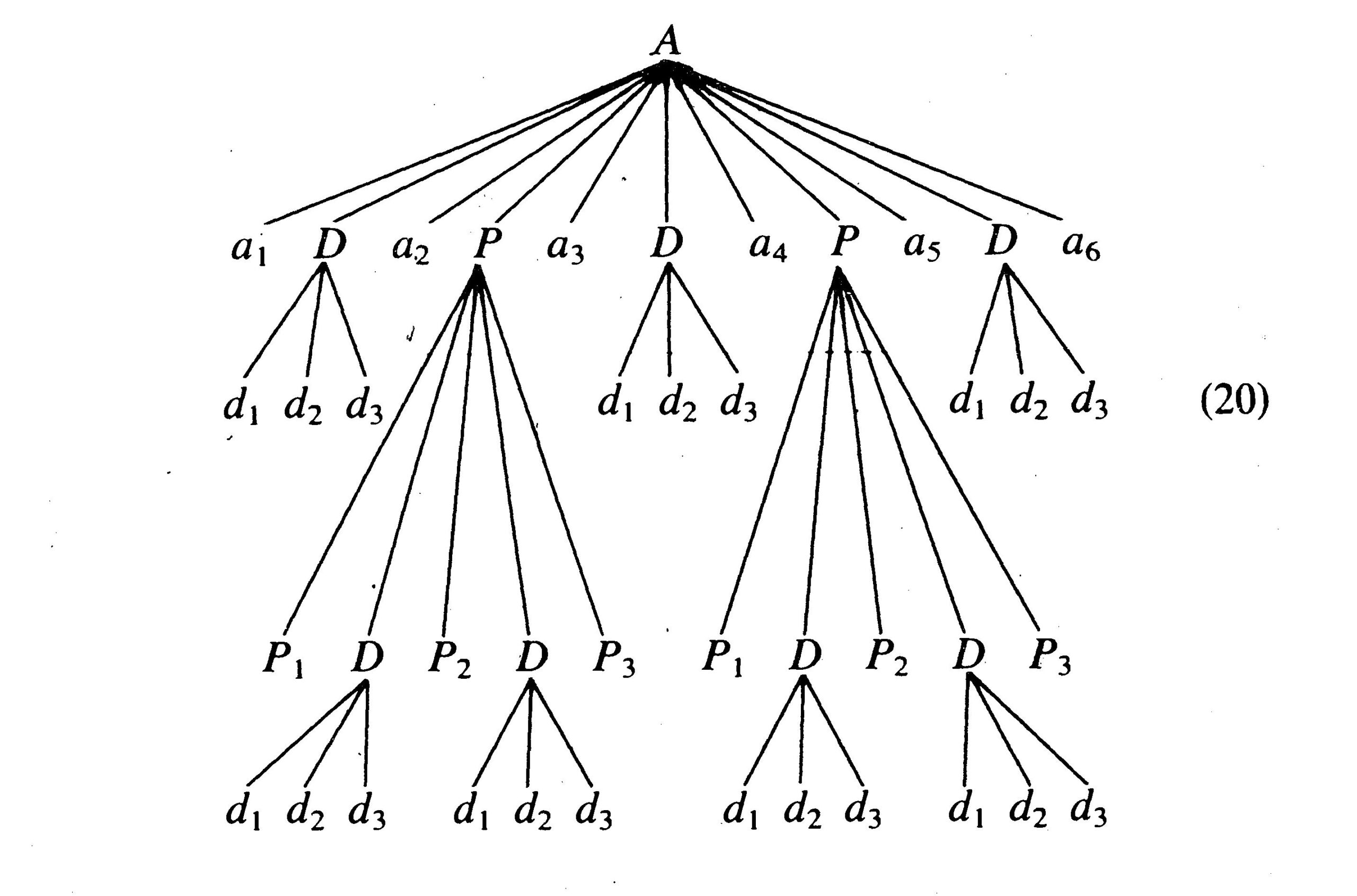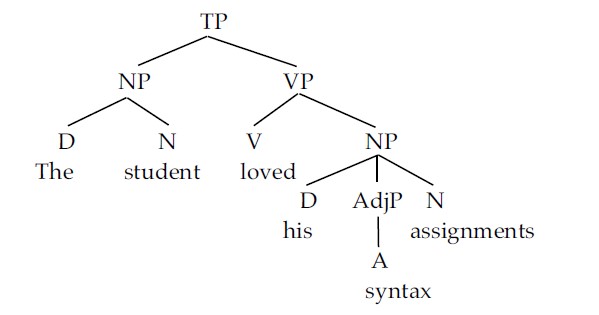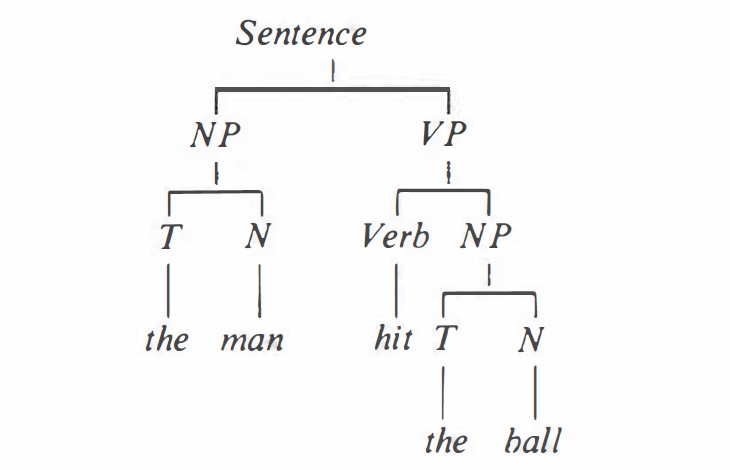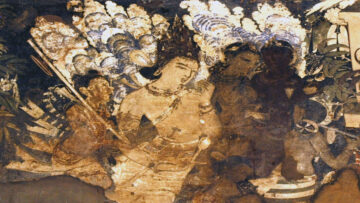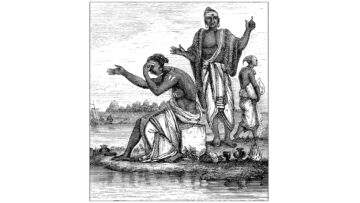(This article is the second part in a series of three articles about Vedic rituals, largely based on the research of German Indologist, Frits Staal. You can read the First Part here.)
Perhaps Staal’s most valuable contribution, which emerges from his research on rituals, is his illustration of how ritual structure mirrors linguistic structure. Staal outlines three features of rituals: recursiveness, embedding, and transformation, which he claims are part of the syntactic structure of every language.
Recursion
I will begin with recursion. Staal uses the rituals that accompany the construction of the Agnicayana altar to illustrate this property of rituals. The construction of each layer of the altar is preceded and succeeded by performances of the pravargya and upasad rituals:
Pravargya – Upasad – Layer – Pravargya – Upasad
Pravargya is a ceremony in which hot milk is prepared and offered to the pair of deities known as the Aswini twins. In the above structure, the pravargya and upasad are always paired together. Another Vedic ritual in which the beginning rite is identical to the ending rite is the horse sacrifice ritual, in which a rite known as the odana is performed both before and after the horse sacrifice.
There are many cases in which the rites at the beginning and end of each ritual resemble each other, but are not identical. An emblematic example of this is the series of rites performed before and after the Agnicayana. The beginning rites performed before the Agnicayana are as follows:
A1 introductory procession
A2 adhyavasäna
A3 dïksâ
A4 prâyanïyesti
A5 tänünaptra
The ending rites performed after the Agnicayana are as follows:
A1* return home
A2* udavasâna
A3* avabhrtha
A4*udayanïyesti
A5*sakhyavisarjana
In his book, Staal adds an asterix next to each step of the final rites in order to distinguish them from the beginning rites. Other scholars have noted that the final rites that follow the Agnicayana, almost mirror the initial rites that precede it. For example, the bathing rite (avabhrta) that follows the Agnicayana ceremony corresponds to the diksa rite that preceeds the Agnicayana. They are both the third step in their respective groups. If we take the letter B to denote the Agnicayana ritual, then the formula that best represents the Agnicayana, its preceding and succeeding rites is:
A1 A2 A3 A4 A5 BA5* A4* A3* A2* A1*
One notices that the Pravargya-Upasad rites that ”surround” the altar construction share the same general structure and rule as the rites that surround the Agnicayana ritual. That is to say, the beginning rites (both the number and type of rites) mirror the end rites. This can be expressed by the formula
B=ABA
These rituals can be extended indefinitely as long as the beginning rites are identical to or correspond to the end rites. For example, ABA can be extended to AABAA, and then AAABAAA, and then AAAABAAAA and so on and so forth. Thus, these rituals have the property of recursivity. In mathematics and logic, recursion has been known for a long time. It allows one to generate infinitely many forms through a single rule. For example, in the formula A=AB, one can apply the rule of the formula to the ”A” on the right side of the formula. This allows one to generate infinite forms of the same formula:
A=AB
A=(AB)B
A=(AB)BB
A=ABBBB,
and so on. Thus, recursion is best defined as the self application of a structural rule by a structure on itself.
In grammar, recursion is when we place one phrase or sentence inside another phrase or sentence of the same type. This phenomenon is also called nesting or self-embedding. A perfect exemplar of grammatical recursion is found in the poem, ‘The House that Jack Built’:
This is the House that Jack built.
This is the malt that lay in the house that Jack built.
This is the rat that ate the malt that lay in the house that Jack built.
In this poem, a group of relative clauses are embedded within one another (Traxler 2012: 5). Staal notes that the Indian intellectuals who studied rituals (ritualist) were aware of recursivity within ritual syntax, and its capacity to produce infinite forms of the same structure. Hence, the theoretical ritual constructs (the sattra rituals), which are of indefinitely increasing complexity and can go on for hundreds of years. Even though these are constructs that cannot be performed in the real world, they have the same structure as actual rituals. Staal also points out that the Indian grammarian Panini was aware that recursiveness governs the structure of both ritual and language. In his text, Mahabhashya, when discussing about how recursion allows linguistic expressions to be extended indefinitely, Panini refers to the Sattra rituals: ”T h e r e are indeed linguistic expressions which are never used. . . . Even though they are not used, they have of necessity to be laid down by rules, just like protracted sattras” (Staal 1996: 89).
Staal points out that many of our everyday activities have a recursive structure. When we go to a music concert, we start from our home, arrive at the address, go through the entrance of the music hall, walk to the auditorium and sit in the seats. When the performance is over, we exit the same way we came and go back to the same place we started from, home. There is a reverse mirroring, similar to the case of the rites that surround the Agnicayna ritual.
(Figure 1: Recursiveness)
Embedding
Indian ritualists have noticed and stressed the hierarchical structure of Vedic rituals. When certain rituals are grouped together, and performed one after the other, one notices increasing complexity in the sequence of rituals performed. Each later ritual incorporates occurrences of the former within itself. In general, when the earlier simple ritual is embedded into a later complex ritual, it undergoes a process called transformation, which I will explain later. Staal picks out four rituals from the Srauta Sutras as examples that illustrate the hierarchical structure of rituals and the embedding of simple rituals into more complex ones:
D: Darsapürnamäsa
P: Pasubandha
A: Agnistoma
C: Agnicayana
In this sequence of rituals, performances of D (Darsapurnamasa) are embedded within P (Pasubandha). Two performances of P and several performances of D are embedded within A (Agnistoma). And in C, the Agnicayana, there is a performance of A, fourteen performances of P, and numerous performances of D.
Staal uses a simplified model to explain the rules of embedding and transformation. He presents a caricature of the Agnistoma rite (A) in which three occurrences of D and two occurrences of P are embedded. Finally, the ritual D always consists of three rites. Frits Staal uses tree diagrams to represent the embeddedness of these rituals:
(Figure 1.1 – Embedding of the Agnicayana rites)
Within this hierarchical structure, the simpler ritual is embedded between each step of the complex ritual. Thus, ritual D is embedded between the first and second step, as well as the second and third step of ritual P. We see a similar pattern in ritual A, in which rituals P and D are embedded in between steps of A. The entire hierarchical structure along with the embeddings, and each of the steps is displayed below:
(Figure 1.2 – Embedding within the Agnistoma)
In grammar, a constituent is a group of words that function together as a unit. Constituency is the most important and basic notion of syntactic theory. Constituents embed inside one another to form larger and larger constituents, phrases and sentences. For example, in the sentence ”The student loved his syntax assignments”, the subject noun phrase is the ”The student”, and it contains a noun (student) and a determiner (The), which are its constituents. The object noun phrase is ”his syntax assignments”. It consists of a determiner (his), an adjective (syntax) and a noun (assignments). This object noun phrase is embedded into the verb phrase ”loved his syntax assignments”, which in turn consists of a verb (loved), and the object noun phrase. All together, these constituents from a hierarchical structure[1]:
(Figure 1.3 – Embedding in Grammar)
One notices that this hierarchical syntactical structure bears a striking resemblance to the hierarchical structure of rituals outlined above. Just as simpler rituals are embedded into more complex rituals, simpler linguistic constituents are embedded into more complex ones to form phrases and sentences(Carnie 2013: 72–73).
(Figure 2: Embedding)
Transformation
Frits Staal also discusses the rule of transformation, another feature that is shared between both ritual and grammar. In Frits Staal’s model of the Agnicayana ritual, when rite D (darsapürnamäsa) is being performed independently, without being embedded in another ritual, the first step (D1) has fifteen samidheni verses. Whereas when ritual D is embedded in ritual P (pasubandha), the first step (D1) has seventeen samidheni verses. Such a process is similar to what is known as transformation in grammar.
The theory of transformational generative grammar was first introduced by the linguist Noam Chomsky. In transformational grammar theory, every sentence has a deep structure and a surface structure. The deep structure is the underlying syntactic structure of a sentence. The syntactic component consists of a base and a transformational part, that transforms the deep structure into the surface structure, which are the sentences we see in language.
The base consists of a set of rules known as phrase structure rules, as well as a lexicon. The tree diagram below provides an example/overview of phrase structure rules:
(Figure 1.4 – Deep Structure)
Transformation is the process of alteration by which the deep structure is converted into the surface structure without loss in meaning. There are many rules that govern this process of transformation. One such rule is the constant deletion rule, which specifies the deletion of specific elements in a sentence. A constant deletion rule known as the imperative deletion rule deletes ”you” from imperative sentences (commands or instructions). ”You go now!” becomes ”Go now!”. Another such rule is the substitution rule in which a word is substituted for another word or phrase. The most common use of this rule is the substitution of pronouns for nouns. A good example of this would be if one substitutes the noun ”The man” in the above sentence ”The man hit the ball”, with the pronoun ”He”: ”He hit the ball”. A similar substitution rule is used in the Vedic rituals when the darsapürnamäsa is embedded in the pasubandha. The original fifteen samidheni verses in the first step of the darsapürnamäsa, is substituted by seventeen samidheni verses. But the basic structure of the darsapürnamäsa is still retained(Alduais 2015; Chomsky 2002: 26–28).
(Figure 3: Funeral Rites)
Did Rituals Precede Language?
The fact that both ritual and language share some of the same structural rules such as recursiveness, embedding, and transformation is striking and suggests an inextricable link between the two. Staal suggests there are three simple explanations for this: either language is the cause of this shared structure (and the human capacity for language exhibits itself in ritual), or ritual is the cause, or there is a common cause for both. Staal discounts the third possibility, because he is not in a position to consider that possibility. It involves complicated questions about the essence of human beings and their brain structure, and requires multidisciplinary research in different fields from linguistics to cognitive psychology to neurobiology. Out of the other two possibilities, Staal leans towards ritual being the cause of the shared syntactic structure, and provides some evidence in support of his position. Firstly, ritual is older than language. Early man was performing rituals long before he developed language. Animals have rituals, but not language. The other hypothesis which goes well together with the view that syntax has a ritual origin, is that syntax is older than semantics. There is evidence that syntax is older than semantics. Vedic rituals are replete with recitation and chants and mantras. Whether or not these chants and mantras have some meaningful words, in their ritual use, all that matters are the sounds and their configurations, which are highly structured. As I discuss in the next section, in the chanting of mantras, the function of language is phonetic and syntactic, not semantic.
Moreover, during the Vedic rituals, the participants are not supposed to communicate with each other through ordinary language. In meditation too, linguistic meaning is excluded. The meditation mantras consist of mostly meaningless syllables. Staal hypothesizes that these features of rituals and mantras are remnants of a pre-linguistic stage of development, during which sound was used purely in a syntactic manner, without meaning.
Finally, another observation that Frits Staal brings up as evidence that syntax precedes language, is the fact that language links sound to meaning in a very roundabout illogical fashion. Instead of a straight one to one correspondence between sound and meaning, we have a complicated set of syntactic rules linking sound to meaning.
Mantras and Language
In addition to rituals, Staal conceptualized mantras as rules without meaning. In the previous section, it was mentioned that it was the sounds and the configurations that mattered in mantras rather than the meaning. The ancient ritualist Kautsa declared that mantras were meaningless. He gave four reasons for the meaninglessness of mantras. First, the sound of mantras may not be changed unlike in language where sounds may change provided meaning remains the same. Second, the order of elements in mantras may not be changed, unlike Sanskrit, where word order is to a large extent free. Third, mantras are often contradictory and inconsistent with each other. In language, when sentences contradict each other, these contradictions have to be resolved before one can form a canon, especially a religious canon. The history of Christianity is replete with theologians trying to resolve contradictory statements in the Bible. In contrast, the Indian ritualists were indifferent to contradictory mantras. Fourth, there is a tradition of transmitting the sounds of mantras but not their meanings. It is the last reason that Staal’s research is chiefly concerned with.
Another two reasons listed by Staal (but not by Kautsa) as to why rituals are meaningless is related to the fourth reason given by Kautsa. Mantras remain invariant over time and across geography. Language changes over time and across language boundaries where they are translated. Mantras are not translated. This is evidenced by the fact that when Sanskrit Buddhist mantras travelled from India to Asia and southeast Asia, they are not translated but transliterated. Their Sanskrit based phonological structure does not change but adapts itself to the new environment. In the Japanese Buddhist fire ritual called goma (from the Sanskrit homa), there is a mantra on boku ken which in Sanskrit is om bhuh kham (Om, Earth-Space!).
Mantras may consist of language but they are used in a manner that is totally different from the way we use language. If mantras preceded language, then the original pre linguistic mantras must have been like ”om” and bija mantras, structured sounds that don’t have any language in them. Later, as human beings developed language, mantras became couched in language, but still continued to be used in the same manner as the non linguistic mantras. Even though the mantra sivaya namah is a phrase governed by language rules, it is not used as a linguistic utterance, but used in the same way as non linguistic meaningless utterances like om. This has a parallel in biology, when a body part that is used for a specific purpose is used for another purpose, such as legs used for swimming. When used for swimming, the legs are not legs, that is to say, not appendages used for walking, but function as fins. Similarly, mantras couched in language have a ritual function. They are not a communication tool like language. The existence of non-linguistic mantras, and the fact that rituals came before language, suggests that language was derived from mantras in the course of human evolution.
The Science of Ritual and Language
Staal states that Indians developed at least two sciences, the science of ritual and linguistics: ”the ancient Indians possessed a science of ritual which used primarily syntactic methods, and…linguistics originated in India in close association with this syntactic analysis of ritual.”[2]
Indian linguistics have a complex system of rules and metarules that originated with and allowed the Indian ritualists to describe and analyze complex ritual structures. The origin of linguistics in India went hand in hand with the oral transmission of the Vedas. In order to safeguard the transmission of the Vedas, the continuous samhita form of recitation (samhitapatha) was broken down into its constituent elements, the attention primarily focusing on words, and the euphonic combinations between these elements were studied. Euphonics refers to the harmonious succession of words having a pleasing sound. The word for word recitation, set up alongside the samihatapatha was called the padapatha. The samhitapatha and padapatha were related to one another through a set of rules and metarules. Two examples of such rules will be discussed below:
The samhitapatha form of the vedic chant (órv aprä âmartyâ nivâto devy udvâtah) is broken down in the padapatha form in the following manner: â / uru / apräh / âmartyâ / ni-vâtah /devi / ut-vâtah / /. One of the rules that relates the word ”órv” of the samhitapatha to the padapatha is a+u = o. The ”o” of the ”órv” is substituted by a combination of ”a” and the first ”u” of ”uru” in the padapatha. Another rule is the substitution of ”v” in ”órv” with u in the padapatha: a+u = o. But the second rule only applies under certain conditions, when ”a” follows the ”v” in the samhitapatha. It can be formulated as a+u=o when a follows. This can be formulated as a metarule: vowel = corresponding semi-vowel when a different vowel follows. Each of the Vedic schools had a Pratisakhya text associated with it, that aimed at a complete description of the rules through which samhitapatha was derived from the padapatha. Linguistics may have had its beginnings in the Pratisakhyas but they truly took shape in the tradition of grammatical analysis, starting with Panini. Interest shifted from the fixed corpus of Vedic recitations to the living domain of spoken Sanskrit. The main difference between the Pratisakhyas and Panini is that the Pratisakhyas studied the finite utterances of the Vedas, whereas Panini studied the sentences that make up language. It was Panini who first formulated the insight that language was infinite in the following passage:
For we have a tradition which describes how Brhaspati addressed Indra during a thousand divine years going over the grammatical expression by enunciating each particular word, and still did not attain the end. With Brhaspati as the professor, Indra as the student, and a thousand divine years as the period of study, the end could not be attained; so what of us at the present day, who when we live in full live at most a hundred years?. . . The recitation óf each particular word, therefore, is not a means for the understanding of grammatical expressions. How, then, must grammatical expressions be understood? Some work containing general and particular rules has to be composed (Mahübhäsya, ed. Kielhorn, 5.23—6.3) (Staal 1996: 40)
Since the forms of language are infinite, they cannot be enumerated but must be characterized in a systematic, scientific manner through general and particular rules known as laksanam or sutra. Panini’s grammar analyzed words systematically into smaller units such as roots, stems, suffixes. His main innovation was that he developed the concept of grammatical rule into something more abstract such as rule systems and metarules. Metarules govern and explain the application of rules. Such metarules are found in Vedic rituals as well. Staal uses a portion of the twenty fourth section of the Apastamba Srauta Sutra to illustrate these metarules. These metarules govern and structure the rules of that particular ritual:
- We shall explain that ritual
- It is enjoined with the three Vedas
- With the help of Rigveda, Yajurveda, and Samaveda
- The full and new moon rituals with Yajurveda and Rigveda
- The Agnihotra with the Yajurveda
- The Agnistoma with all three
- The rites are performed with Rigveda and Samaveda with a loud voice
- With Yajurveda softly
After emphasizing that India did indeed develop a science of both language and ritual, Frits Staal lists four criteria that make any discipline into a science. First, science consists of a body of statements, rules, theorems, whose goal is to describe the world. Second, these theories consist of abstract statements that go beyond mere facts, and includes predictions and descriptions about the underlying structure behind the phenomena. Third, this entire edifice of descriptions should be consistent and not contradictory with one another. Finally, science has a methodology, through which it formulates and solves problems, so that it can arrive at a generally accepted conclusion. Staal proceeds to argue that both Indian linguistics and the analysis of ritual fulfil this criteria.
First, Indian grammatical treatises as well as ritual manuals are descriptive rather than prescriptive. It is the speakers of the language who decide what is correct grammar. The grammarians merely describe the grammatical rules that the speakers are using, whether or not the speakers are aware of these rules. Similarly, the Srauta Sutras are merely describing the rules of the rituals as performed by the purohits. Thus, both Indian ritual analysis and linguistics fulfil the first criteria of describing empirical phenomena. Second, both the science of ritual and language contain abstractions. Panini explained the infinitude of language, and discusses how linguistic expression can be extended infinitely through recursion, and outlined the rules that allow such extensions. The Srauta Sutras too, contain abstract theoretical rituals that can be extended for thousands of years. Third, in Indian grammar, there is a rule known as vipratisedhe param käryam, which safeguards the consistency of grammar if it had been universally applicable. Since the rules were ordered, an important metarule safeguarded grammatical consistency by specifying that in case of contradiction between two rules, the latter prevails. Contradiction is rarely an issue for rituals, firstly because there are a variety of options provided by various schools. More fundamentally, since rituals are practices without meaning, they are compatible, unlike religious and philosophical doctrines. An example of contradiction in rituals is when there is an impossibility, like two different priests doing the same thing at the same time and place. For such cases, there is a meta rule: ” when it is stated explicitly or in case of contradiction another should perform”(Staal 1996: 356).Lastly, methodology is implicit in grammar in the principle of non contradiction; rules are formulated systematically in order to avoid inconsistency and contradiction. In ritual too, rules and metarules were systematically formulated.
Conclusion
In summary, Frits Staal’s research is important and provides us with important insights and knowledge about Indian culture, and human beings in general. Staal has convincingly shown that Indian culture has developed both a science of ritual and language. While many cultures have developed linguistics, no other culture, as far as Staal knows, has developed a science of ritual.
Staal has also meticulously analyzed and demonstrated that aspects of Vedic ritual syntax mirror those of grammar. If Staal’s hypothesis is correct, that language developed out of ritual syntax, it raises important problems and consequences, that create huge ramifications in multiple fields such as cognitive science, evolutionary biology, pedagogy, neurobiology, and linguistics.
The Vedas are literally translated as knowledge. The Astika traditions regard the Vedas as the foundation of the knowledge contained within these traditions. What kind of knowledge is derived from the Vedas? What does it have to do with Vedic rituals? And most importantly, how does this knowledge lead to happiness? These are the questions that will be addressed in the next article in this series on rituals.
Bibliography
Alduais, Ahmed, MS (2015): A Brief Account of the Base Component of Transformational Generative Gramma, in: International Journal of Indian Psychology, Jg. 3, Nr. 1, S. 5–9.
Carnie, Andrew (2013): Syntax: a generative introduction, Third Edition. Hoboken, New Jersey: Wiley-Blackwell (Introducing linguistics).
Chomsky, Noam (2002): Syntactic structures, 2nd ed. Berlin ; New York: Mouton de Gruyter.
Staal, Frits (2008): Discovering the Vedas: origins, mantras, rituals, insights, New Delhi: Penguin Books.
Staal, Frits (1996): Ritual and mantras: rules without meaning, Delhi: Motilal Banarsidass.
Staal, Frits (1979): The Meaninglessness of Ritual, in: Brill, Jg. 26, Nr. 1, S. 2–22, doi: 10.1163/156852779X00244.
Traxler, Matthew J. (2012): Introduction to psycholinguistics: understanding language science, 1st ed. Chichester, West Sussex ; Malden MA: Wiley-Blackwell.
To be continued….
[1] TP=sentence, NP=noun phrase, VP=verb phrase, D=article, N=noun, V=verb, A=adjective phrase
Disclaimer: The opinions expressed in this article belong to the author. Indic Today is neither responsible nor liable for the accuracy, completeness, suitability, or validity of any information in the article.

